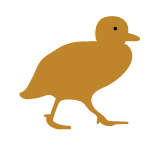This course introduces students to the principles, concepts and applications of quantum technology. Building upon prior learning in quantum mechanics, students will first develop an understanding of the ‘qubit’ as the model quantum system used in quantum technologies. Students will then explore the archetypal physical realisations of qubits (eg superconducting circuits, photons, trapped atoms etc) before being introduced to each of the major types of quantum technology: computing/ simulation, communications and sensing/ microscopy. During this learning, an emphasis will be placed on critically comparing the different realisations of qubits and quantum technologies as well as quantum and classical technologies so that students readily appreciate the advantages and disadvantages of each. Assessments will be designed to advance computational skills as well as written and verbal communication skills necessary for the quantum industry.
Learning Outcomes
Upon successful completion, students will have the knowledge and skills to:
- Model the initialisation, control, measurement and decoherence of qubits as abstracted quantum systems;
- Appraise archetypal physical realisations of qubits (superconducting circuits, trapped atoms, spin defects in solids, photons etc), methods of initialisation, control and measurement, and sources of decoherence;
- Examine the key principles, concepts and applications of each major quantum technology type: computing/simulation, communications and sensing/ microscopy;
- Critically compare different realisations of quantum technologies as well as quantum and classical technologies;
- Develop advanced computational, written communication and verbal communication skills.
Indicative Assessment
- Assignments (30) [LO 1,2,3,5]
- Presentation (20) [LO 4,5]
- Final exam (50) [LO 1,2,3,4,5]
The ANU uses Turnitin to enhance student citation and referencing techniques, and to assess assignment submissions as a component of the University's approach to managing Academic Integrity. While the use of Turnitin is not mandatory, the ANU highly recommends Turnitin is used by both teaching staff and students. For additional information regarding Turnitin please visit the ANU Online website.
Workload
The expected workload will consist of approximately 130 hours throughout the semester including:
- Face-to face component which may consist of 3 x 1 hour workshops and 1 x 1 hour tutorial per week.
- Approximately 82 hours of self directed study which will include preparation for lectures and other assessment tasks.
Inherent Requirements
No specific inherent requirements have been identified for this course.
Requisite and Incompatibility
Prescribed Texts
N/A
Preliminary Reading
Most recent edition of: M.A. Neilsen and I.L. Chuang, Quantum Computation and Quantum Information, Cambridge University Press.Fees
Tuition fees are for the academic year indicated at the top of the page.
Commonwealth Support (CSP) Students
If you have been offered a Commonwealth supported place, your fees are set by the Australian Government for each course. At ANU 1 EFTSL is 48 units (normally 8 x 6-unit courses). More information about your student contribution amount for each course at Fees.
- Student Contribution Band:
- 2
- Unit value:
- 6 units
If you are a domestic graduate coursework student with a Domestic Tuition Fee (DTF) place or international student you will be required to pay course tuition fees (see below). Course tuition fees are indexed annually. Further information for domestic and international students about tuition and other fees can be found at Fees.
Where there is a unit range displayed for this course, not all unit options below may be available.
| Units | EFTSL |
|---|---|
| 6.00 | 0.12500 |
Course fees
- Domestic fee paying students
| Year | Fee |
|---|---|
| 2025 | $4680 |
- International fee paying students
| Year | Fee |
|---|---|
| 2025 | $6720 |
Offerings, Dates and Class Summary Links
ANU utilises MyTimetable to enable students to view the timetable for their enrolled courses, browse, then self-allocate to small teaching activities / tutorials so they can better plan their time. Find out more on the Timetable webpage.
Class summaries, if available, can be accessed by clicking on the View link for the relevant class number.
Second Semester
| Class number | Class start date | Last day to enrol | Census date | Class end date | Mode Of Delivery | Class Summary |
|---|---|---|---|---|---|---|
| 7582 | 21 Jul 2025 | 28 Jul 2025 | 31 Aug 2025 | 24 Oct 2025 | In Person | View |


